Why the “love of beauty”?
Today I created a second sub-section of this website, called “For Love of Beauty – Philokalia” to start sharing the things I’ve been discovering about the ancient Christian traditions of spirituality and the interior life. The word, “Philokalia” is Greek, and means “love of the beautiful, the exalted, the excellent”. It is an ancient summary of the Christian spiritual life; we pursue God because only in Him is found the absolute perfections of the Beautiful, True and Good. And in understanding the meaning of that phrase we come to see better how physical objects of Christian sacred art – icons, buildings, works of art and music – are integrally related to the pursuit of this mystical intimacy with Christ.
I wanted to expand the site to start including the reading and listening I’ve been doing about the pursuit of the interior life, the “contemplative prayer” aspect of the Christian life. As always, it’s not me being an expert; it’s me sharing things as I learn.
The sections - the tabs at the top of the front page - are really just about categorising and filing; you can safely ignore them if you’re trying to keep up. The first few posts in this section will be going to the full list for free. As we go along I’ll probably get more in-depth and those will be paid posts. The paid posts will also be chock full of added downloadable extras, as I find them, for those who are really keen.
I’m creating this section mostly to keep myself organised, to keep my categories separated accurately. The main section of “World of Hilarity” will continue to be about general topics related to Christian sacred art, philosophy and history of, and everything in there will always been free to everyone. The “Sacred Images” section is aimed at more serious students of Christian sacred art - especially those who will be buying the course packages - and will be where nearly all the paid posts are filed.
What is the Philokalia?
As a book, the Philokalia is a collection of texts, compiled by Orthodox priests in the 18th century, written between the 4th and 15th centuries by spiritual masters of the Church, many of whom are saints and Fathers of undivided, pre Schism, Christianity. It’s considered a foundational text on the Christian mystical tradition in the Orthodox world, emphasising interior, contemplative prayer and the pursuit of the mystical “transforming union1” with God. In this section we are going to explore as much as I can find and dive into of that ancient tradition of mystical theology.
This pursuit is the core of being a Benedictine Oblate2, but in reality, it is the central purpose of the Christian life in general, and therefore the ultimate purpose of all Christian sacred art.
This is yet another area of Christianity that has been all but lost to memory in the Western, Latin Church – but that still remains a lively and primary part of the Christian life in the East.
Caveat
I’m writing from the point of view of a beginner, as someone who has only dipped a toe into these ancient, mysterious and great things. I’m being supervised, albeit from a distance, by authoritative persons. But I might make mistakes.
NB: These are topics that we have all but lost and forgotten, but are remembered in the East. That means that I will be reading and listening to speakers and writers not in union with the Roman Catholic Church. I approach them with caution and I am open to corrections, discussions, questions and ideas that I’ve not thought of.
I want to make clear that I am a student; not by any means a teacher. But I believe strongly that we Latin Catholics must re-appropriate these all but lost spiritual aspects of our Faith. Without that, no amount of activism or “restoration” will help us.
I want to emphasise, however, that schism is a grave sin and I will never leave the Church or endorse or encourage anyone leaving the Catholic Church for Orthodoxy. For one thing, it’s not necessary; everything salvific they have are also things we already have or can have. Leaving for Orthodoxy is not the solution for what ails us. Reunification is out of my hands, but I pray for it daily.
Dry water and Living Water
For many years as a practicing Catholic, my spiritual life was almost entirely external, and deeply fraught with anxiety. I thought that being a Christian meant doing things. Going to Church on Sunday. Saying my prayers. Following the rules. Fulfilling the precepts – the regulations – of the Church as an institution. I thought that the Christian life meant fulfilling obligations, a kind of exercise in box-ticking.
What I couldn’t figure out was how all those checklists made you into a saint, because it clearly wasn’t working on me. I saw the great uncrossable gulf between me and my little weekly Catholic to-do list and the wonders and glories of the floating, bi-locating, miracle working superheroes I read about in the books. I knew I was obliged to get there – it was the most important box on my list – but I knew it was impossible.
To say it was unsatisfying is to say the least possible thing. It is empty. It is like an exercise in despair. It is drinking dry water. Is this all the Faith is? This endless pursuit of empty activity? If this is what it was all about, it was about nothing at all.
The quote from the Last Battle was in my mind.
Would it not be better to be dead than to have this horrible fear that Aslan has come and is not like the Aslan we have believed in and longed for? It is as if the sun rose one day and were a black sun.”
“I know,” said Jewel. “Or as if you drank water and it were dry water. You are in the right, Sire. This is the end of all things.
A garden enclosed
I was in my late 30s when I finally read a book called “Fire Within” by Thomas Dubay about Carmelite contemplative prayer and was introduced to the beginning of the solution. In a word, prayer changes you. The great gulf isn’t narrowed by any action of your own; God changes you and the gulf simply disappears. Holiness isn’t something you accomplish from exercising effort, from trying to be good, from fulfilling all the regulations and requirements of this or that devotion. It certainly isn’t about finding the right or most “authentic” devotional practice.
Holiness is something that comes about as a result of sustained intimate prayer. It is a miraculous transformation. This was a revelation, and the beginning of a long change that led me finally completely out of activism and into the work that I do now.
It wasn’t until then I started to understand there was a whole aspect of the Christian life I’d been entirely blind to, and had certainly never heard about from any pulpit; the interior life, what it is and how to live it. It wasn’t until then that I started to understand the poverty of what we’ve been given in the modern Church. No, the verbal recitation of prayers by itself, even the Rosary – and still less ticking the boxes on my list of dry rules and regulations – isn’t what was going to change me. Trying very hard to be good wasn’t going to make me better.
Fr. Dubay writes about the mysterious transformation of Moses during the Israelites’ time in the desert, their purification, when he was often called to be face to face with the God of Abraham in the tabernacle. So changed was he by this that he was obliged to go about with his face veiled.
“When Moses came down from Mount Sinai with the two tablets of the covenant law in his hands, he was not aware that his face was radiant because he had spoken with the Lord. When Aaron and all the Israelites saw Moses, his face was radiant, and they were afraid to come near him. But Moses called to them; so Aaron and all the leaders of the community came back to him, and he spoke to them. Afterward all the Israelites came near him, and he gave them all the commands the Lord had given him on Mount Sinai.
“When Moses finished speaking to them, he put a veil over his face. But whenever he entered the Lord’s presence to speak with him, he removed the veil until he came out. And when he came out and told the Israelites what he had been commanded, they saw that his face was radiant. Then Moses would put the veil back over his face until he went in to speak with the Lord.” Exodus 34:29-35
This is the intimacy with God that we are all called to; to become a “garden enclosed” to meet and tryst with the Beloved. This is the promise of God in Ezekiel that had “tempted” me back into the practice of the Faith in my late 20s: “A new heart also will I give you, and a new spirit will I put within you: and I will take away the stony heart out of your flesh, and I will give you an heart of flesh.”
It's not to get a shiny face, or manifest fantastic abilities, that one enters into the great struggle, that life of interior warfare with the self that the early monastics called the “combat of the desert”. The soul responds to the interior call to enter into a closer intimacy with God. All the things in the way – ourselves and the work of the demons (the world, the flesh and the devil) that want to stop this process at any cost – are what the spiritual combat consists of.
This is what I’d failed to understand as a “Culture Warrior” – the real spiritual warfare isn’t with the external world; it’s not about changing legislation. It’s not even about “changing hearts and minds”. It’s between my ribs; the heart and mind that needs to be changed is mine.
I once asked a friend and fellow Benedictine Oblate, “What do we think would happen if only 10% of the Catholics in the world achieved the Transforming Union?” He said, “A total transformation of the whole world.”
Going forward; going back
In the first few posts of the new section of this website, “For Love of Beauty – Philokalia,” I’ll be offering some of the articles that I wrote years ago about these discoveries for the Remnant and other online places. I’m starting with these for my own sake more than anything. An attempt to recall a train of thought I was in while living in Norcia and receiving direction from the monks there. They introduced me to a whole line of spiritual writing that I hadn’t known existed, and these ancient authors – as well as their spiritual descendants in our time – present an entire methodology of life, one radically at variance with that of the modern world.
I’ve been somewhat distracted for the last several years, I think. Since I lost my home in the 2016 earthquakes I’ve been concentrating on figuring out how to live, what to do in an active sense, with myself. I left journalism and activism, took up painting, started studying the traditions of sacred art, and it has been all-absorbing. But the time has come, and is past due, to return to this other half. And I had the idea that sharing these discoveries could be of help to the wider world, as well as help me get back on track.
And I’d love to have some company.
I’m going to be using a lot of terms from the Eastern/Greek tradition out of necessity, since many of the concepts have been largely ignored by Western Christian thinkers for a thousand years. But we do have Western terminology and I’ll use it as much as I can. There will be footnotes. Lots and lots of footnotes.
I was professed for life as an Oblate of the monastery of San Benedetto (now San Benedetto in Monte) in Norcia in 2014. And I suck at it. This is part of my effort to become Less Bad as an Oblate.

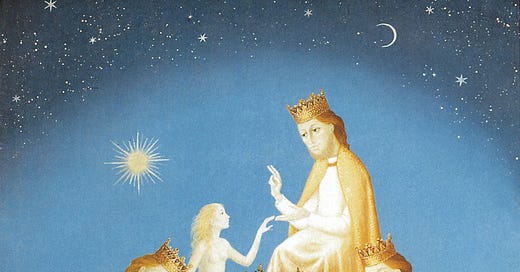



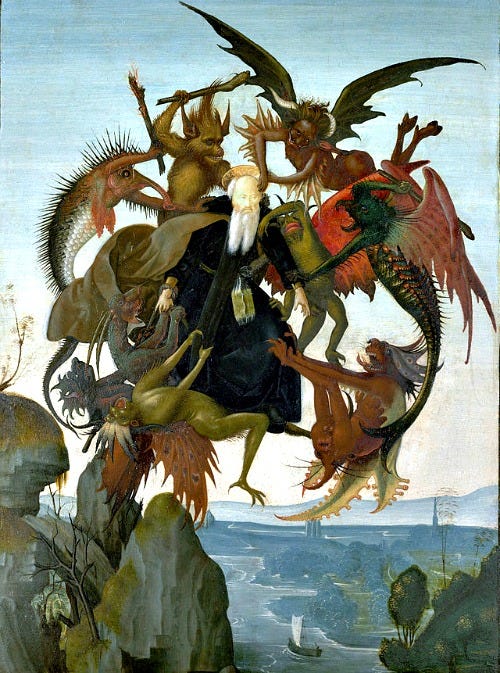
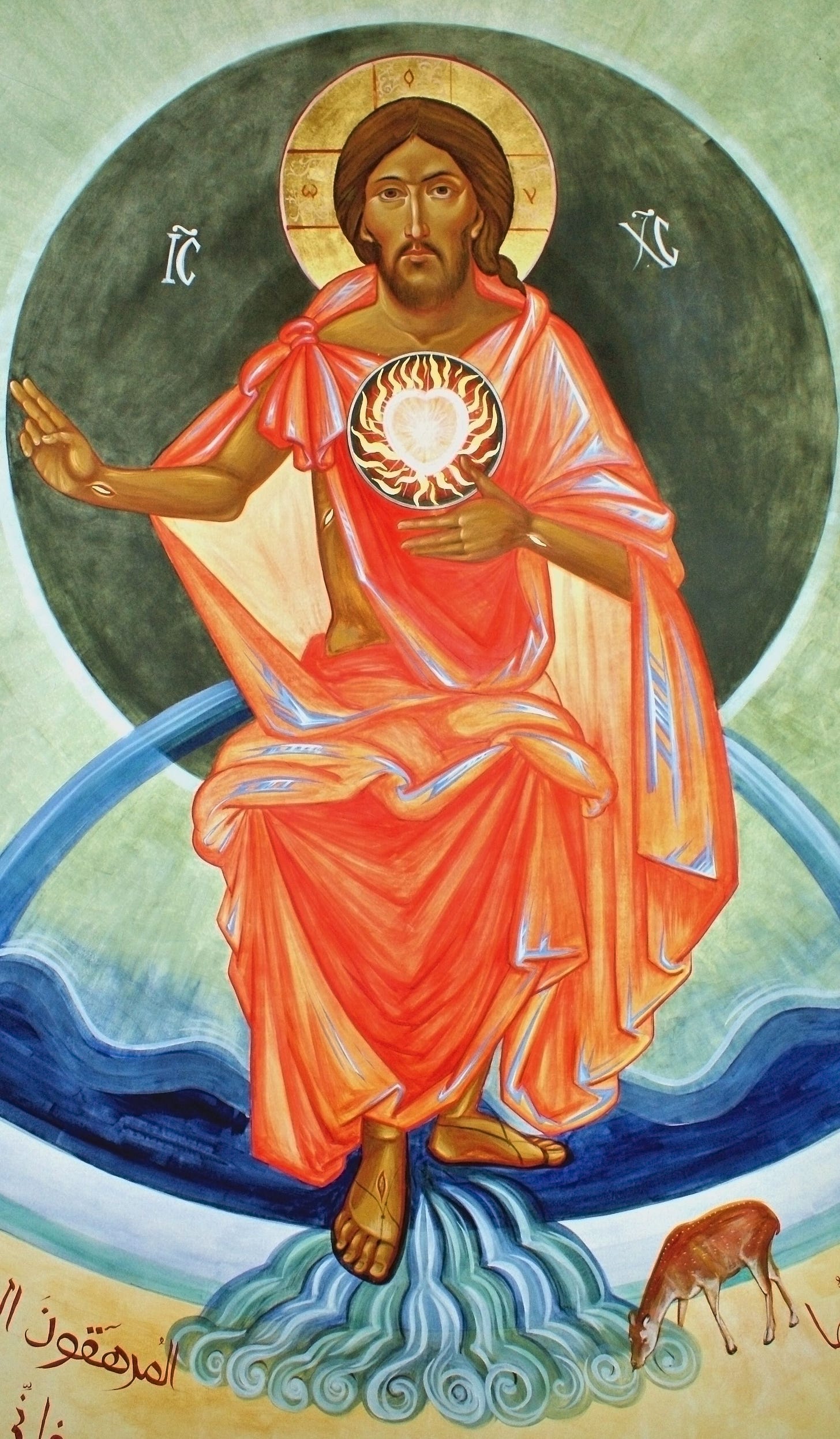
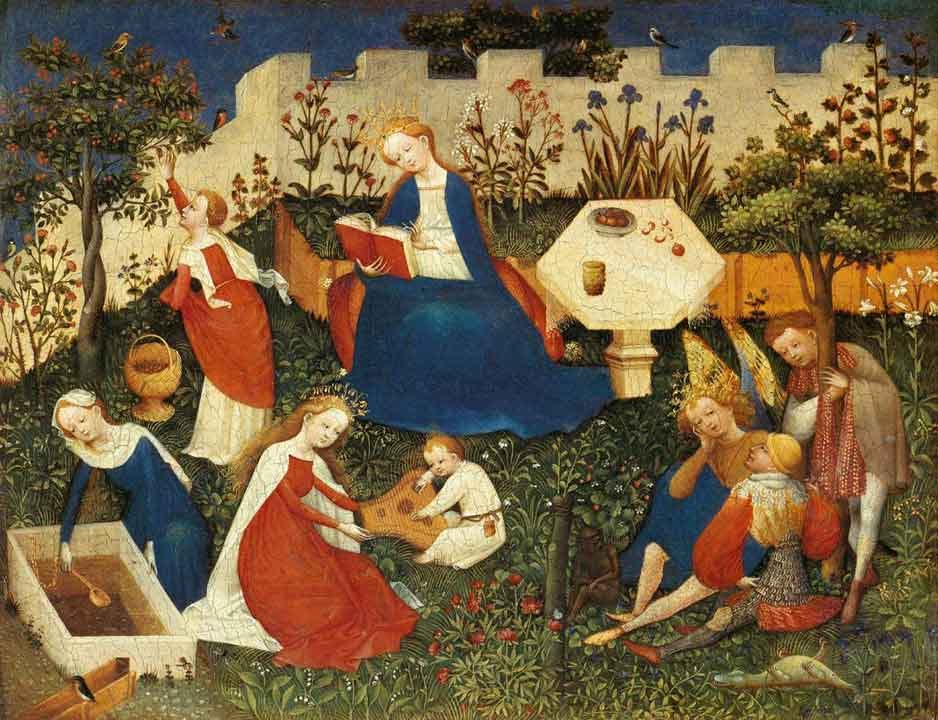
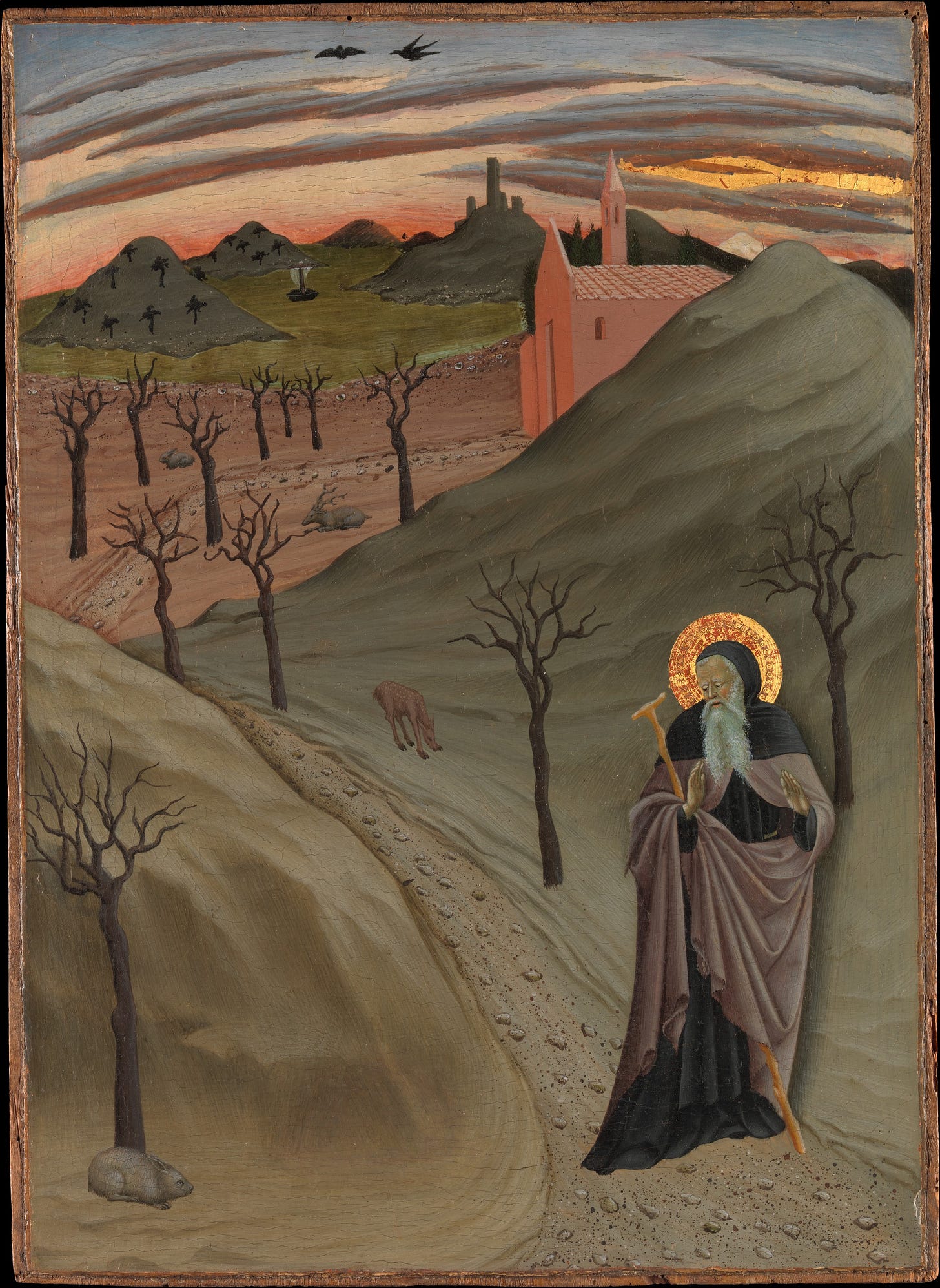
Miss White- It is what I often call 'doing all the things' and it probably does have its place, but it is a very basic introductory one. A way of being oriented and beginning purgation. That the Christian path typically ends there is one reason why people leave the Church and move to, say, Buddhism or simply give up entirely. Or just remain stuck for decades wondering what they are doing wrong.
But there is a full-depth and co comprehensive Christia path waiting to be more fully revived. There is no need to look other than in our own house. Anyway, I look forward to more of your thoughts on the matter.
And thank you for recommending my substack. It is much appreciated.
I hope you are well. -Jack
I'm happy to see you returning to this theme. Your writings for the Remnant on all things monastic helped propel me on my journey to become a Benedictine Oblate in 2022. I have a lot to learn myself, and look forward to accompanying you on this journey.